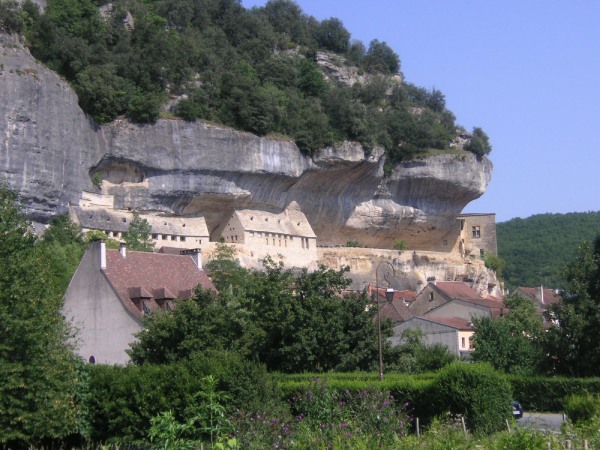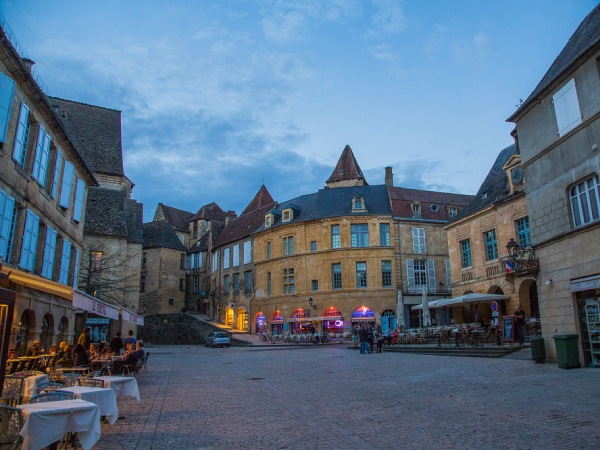Discovery of the Lascaux Caves in Dordogne
Information on the Lascaux Caves
At the campground located in the Dordogne in the Périgord Noir, you will stay just 25 minutes from the caves of Lascaux, world famous for their beautiful cave paintings. A historical and even prehistoric monument, Lascaux in the Dordogne department has an ornate cave, a cavern and a cave open to the public.
If the original cave is closed to the public since 1963 for its preservation, the facsimile Lascaux II reproduces identically a large part of the authentic cave paintings that you can discover in guided tour. A traveling reproduction called Lascaux III also exists.
Since 2016, you can visit it on the site the international center of parietal art Lascaux IV. This prehistoric cave traces the life of homo sapiens during the Prehistoric period, it has even entered the World Heritage of Humanity.
Where are the Lascaux Caves located?
The geographical location of the Lascaux cave is in Montignac, north of Sarlat in Dordogne. Known as the "Sistine Chapel of cave art", this cave contains such famous frescoes that it overshadows other natural caves in the Dordogne.
Located in the Vézère Valley, this historic site can be reached in just 25 minutes from the Le Temps de Vivre campsite. Conveniently located, this famous cave is close to your vacation accommodation.
How to visit the caves of Lascaux ?
Lascaux II désigne la reproduction de la grotte originale. Sa visite, guidée, dure une 1h15 environ.
Lascaux IV is the new replica, within the recently opened International Center of Cave Art. Plan 2.5 hours to visit this second site.
Both visits can of course be done in the same day. It is recommended to start with the cave of Lascaux II. On both sites, remember to bring warm clothes, because even on the best summer days, the temperature of the caves is 13°. There is a fixed schedule for visiting the replicas of Lascaux IV. You will then have access to the museum which you can visit freely and at your own pace.
The free tour is accessible to strollers, but these must be left in a locker for the visit of the cave part. Similarly, photographs are allowed in the center but forbidden in the caves.On the site of Lascaux IV awaits you a food point, in service from 10am to 5pm.
The Lascaux caves: tourist guide
Nicknamed the "Sistine Chapel of Cave Art," the Lascaux Caves in Montignac is one of the most popular and impressive prehistoric sites. Discovered in the early 1940s, the Lascaux cave is now a popular tourist site where the Paleolithic era meets the latest technology. During the visit, you will see a faithful replica of the original cave and enter the international center of cave art, Lascaux IV. This ultra-modern space of 8,000 m² is distinguished by its strange design (no straight walls), its good integration with the environment and the advanced technologies used to optimize the visitor experience.
One of the most popular moments for the public during the visit of the Lascaux cave is the access to the roof of the building by elevator to reach the belvedere. Sitting in front of a large bay window, you will have a panoramic view of the Vézère valley, listed as a Unesco World Heritage Site. With the help of a digital support (tablet) and the guide's comments, you will be able to jump back in time and imagine what the region was like when the paintings and engravings inside the cave were made, 17,000, 18,000 years ago.
You then enter the Lascaux workshop. This space contains 8 walls of the cave with the main motifs represented (The Great Black Cow, The Two Bisons, The Reversed Horse ...) and a beautiful model that represents the entire cave. If you visit the cave of Lascaux with your family, your children will be delighted by the 3D cinema.
When to visit Lascaux
The Lascaux caves are open to the public year-round. The Dordogne is particularly welcoming from April to October. But the temperature in the caves remains at 13° anyway!
To take advantage of the Thot park and its outdoor activities, it is preferable to focus on spring, summer and fall. The school vacations, and particularly the summer months, bring a large number of visitors to the site. However, the opening hours are very wide, and it is possible to have a very pleasant experience of the sites on the first or last visits of the day. If you are vacationing in the Dordogne during the summer months, be sure to book your visit in advance on the Lascaux website.
Lascaux caves: schedules and rates
The rates for visiting the Lascaux sites are:
- 20€ per adult and 12,90€ per child from 5 to 12 years old for Lascaux IV
- 14€ per adult and 9€ per child from 5 to 12 years old for Lascaux II
- 10€ per adult and 6,50€ per child from 5 to 12 years old for the Thot park
- All three sites are free for children under 5
- A combined ticket is offered for all three sites, at a price of 30€ adult rate and 19€ child rate.
- Opening hours vary depending on the time of year.
- They are widest in summer: from 8:30 am to 8:30 pm until 8 am to 9:30 pm in July and August.
- In April, May, June and September, the sites of Lascaux open from 9am to 7pm, then from 9:30am to 7pm in October.
- From the beginning of November to the beginning of April, you can visit Lascaux II, Lascaux IV and the park of Thot from 10 am to 6 pm.
Why is the cave of Lascaux closed ?
The prehistoric cave of Lascaux bears witness to an ancient civilization dating back some twenty thousand years. Its discovery in the year 1940 caused a stampede among many enthusiasts, as this cave is teeming with impressive frescoes. Unfortunately, this excessive influx of spectators has caused the appearance of algae, fungus and limestone veil. These elements from human visitation have proven to be harmful, as the curator and other officials have noticed an alteration in the walls of the cave and on the frescoes. "We then discovered that a cave can die," adds, sadly, the curator of the cave of Lascaux. Thus, the cave has been closed to the public since 1963.
The first symptoms identified came from the appearance and development of microscopic algae. Called "green disease", these algae were subjected to experiments and treatments, which were successful, as they were completely eradicated. Later, the people in charge of the place identified another phenomenon that was altering the place. Indeed, the development of calcareous concretions was observed in the cave. This "white disease" with irreversible character constituted a serious damage for this historical site, because the cave and the totality of its components risked to die. Even the scientific operations of safeguarding were ineffective. On the contrary, the use of formalin and antibiotics reinforced the resistance of these invading organisms.
Following observations and experiments conducted by a special commission, the Minister of State for Cultural Affairs decreed the closure of this historic site. According to the commission's reports, the only solution to save the Lascaux cave is to restore the balance of physico-chemical rates that have kept these frescoes in good condition over these millennia. It is imperative to put this place at rest and to reduce the use of the climate control machine as much as possible. Only a few scientists have access to this site, and their presence should not exceed 200 hours. According to the reports of the scientific council, the cave of Lascaux is becoming more and more stable, and the black spots are beginning to diminish. Fortunately, the frescoes have not been affected and remain unharmed for now. However, the presence of vermiculations, which is a natural phenomenon, worries the scientists. Indeed, they still do not know the impact of these small growths on surfaces decorated with the famous paintings.
The observations and the maintenance of the cave cost the State the bagatelle of 800 000 euros per year. Apart from the remuneration of the scientists carrying out research, a hundred sensors have been installed in the cave in order to follow the evolution of this site in real time. The expense to preserve this historical place is staggering, but it allows to keep this monument alive.
Officially closed to the public, the cave of Lascaux will no longer receive tourist visits. Even the request of the President of the Republic François Hollande was refused by those in charge of the place. The human presence would only worsen the degradation of this historical monument. Despite this unfortunate situation, a similar site has been built next to the Lascaux cave. Indeed, this site is accessible to the public and contains a copy of 90% of the original frescoes. These facsimiles and digital models allow the public to discover these historic paintings , and preserve the original masterpiece from external aggression.
Who discovered the cave of Lascaux ?
The Discovery of the Lascaux Cave is similar to an adventure movie story. The story begins in the late summer of 1940 in the Dordogne. South of the town of Montignac, an apprentice mechanic named Marcel Ravidat discovered an underground cavity that, according to local legend, led to the Lascaux manor. Four days later, the young man returned, accompanied by his friends, to explore the place. Jacques Marsal, Georges Agniel, Simon Coencas and Marcel Ravidat rush, then, in the famous cave and furrow all the ramifications of the cavity. On their way, the teenagers end up discovering several rupestrian frescos which decorate the walls. Sharing their discovery with their teacher, Leon Laval, went down into the cave. In order to identify the paintings in the Lascaux cave, Abbé Henri Breuil was called in to reconnoiter the site a few days later. This professor at the Collège de France and great specialist in cave art, reproduced 31 drawings and sketches of prehistoric frescoes on the walls of the cave.
Cave of Lascaux 2 or 4 ?
Following the closure of the Lascaux cave, sites with replicas similar to the original paintings have been built for the general public to enjoy. With the high number of tourists, it is necessary to make a reservation to visit these reconstructions. Indeed, it is possible to find four versions of the Lascaux cave. Lascaux 1 is the original cave, discovered by teenagers in 1940. Lascaux 2 is the first replica of the cave, opened in 1983. Lascaux 3 is represented by a traveling and international exhibition. Finally, Lascaux 4 is the complete reproduction of the original cave which is accessible to the public since 2016.
- The Lascaux 2 project: Lascaux 2 is the result of a daring project to build a closed cave identical to the original. Inaugurated in 1983, the visit took place as at the time of the discovery of the cave, that is to say, by torchlight. Thus, the beauty of the paintings appeared according to the flickering light. With an intimate and intriguing atmosphere, this form of authenticity is precisely the detail that fascinates visitors. Unfortunately, Lascaux 2 only contains a reproduction of 90% of the cave paintings. Moreover, the accessibility is quite difficult for people with motor problems.
- The Lascaux 4 Project: Lascaux 4 represents the only complete replica that honors the authenticity of the Lascaux cave. The paintings and engravings are scattered in a dark and humid atmosphere reminiscent of the original cave. The details are so well done, because the frescoes have been reproduced to the millimeter according to the techniques of Cro-Magnon men. With the technological prowess, the exploration of the cave is accompanied by a digital journey. An interactive experience is to be discovered on Lascaux 4, including 3D augmented reality, immersive image walls and other museographic and scenographic technologies. The disadvantages of Lascaux 4 are mainly related to a high saturation of visitors in high season, as well as a visit duration of 40 minutes, considered too short.




